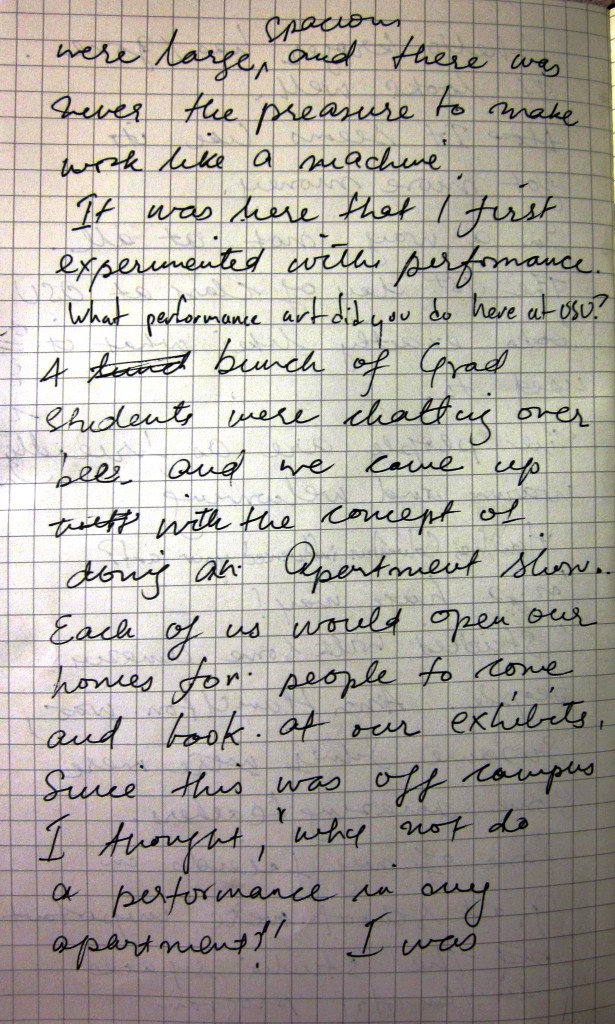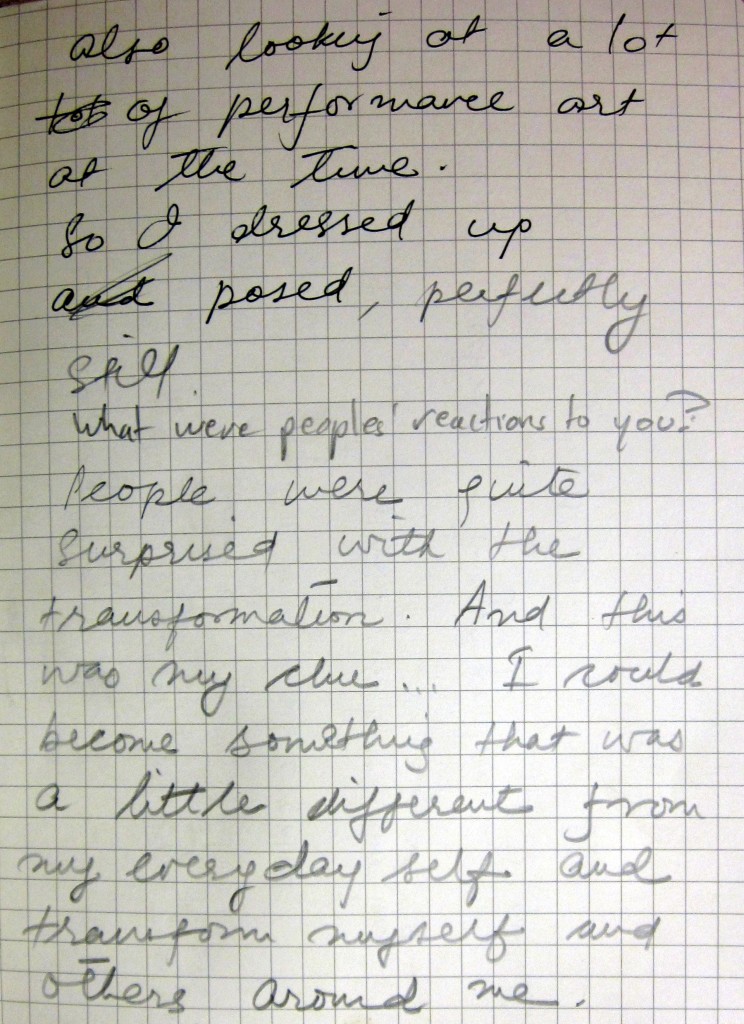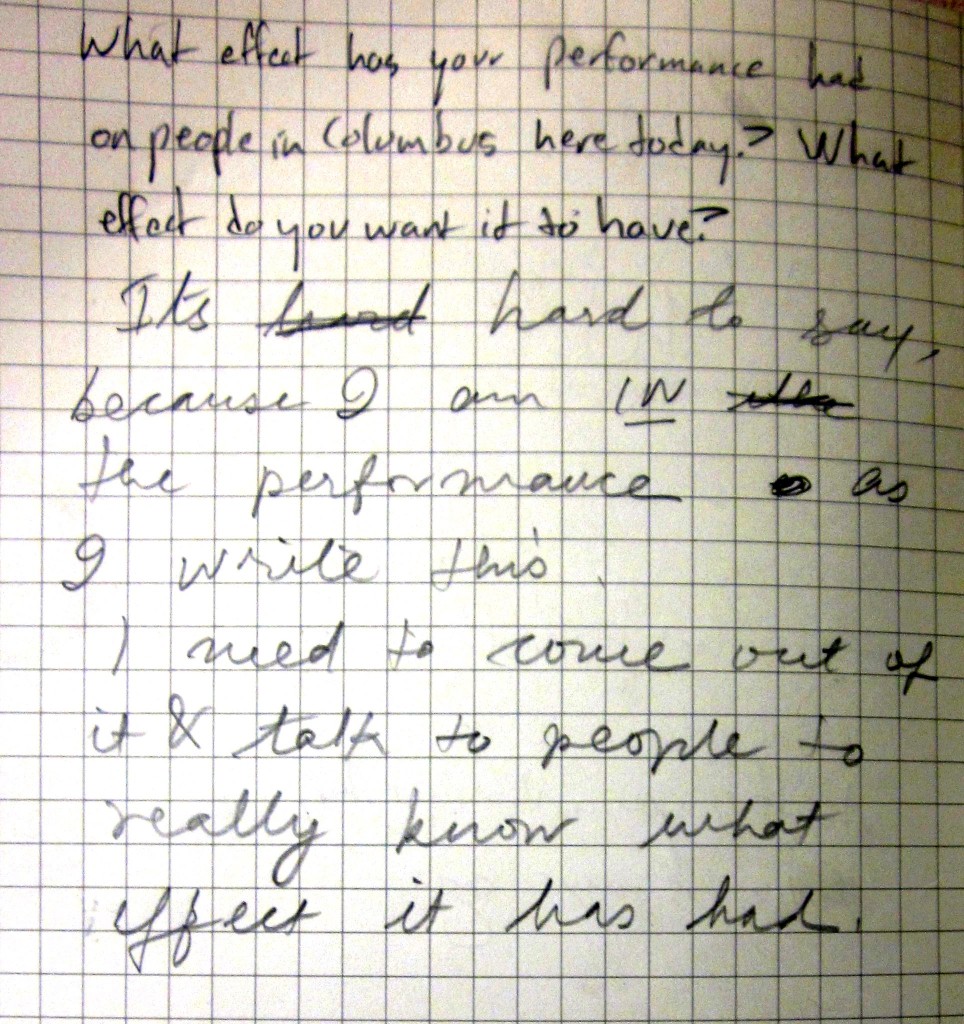How I interviewed a man who wouldn't talk
My most-recent piece for The Lantern reatured an interview with Nikhil Chopra, a performance artist. As part of his performance "inside out: As the stars viewed the Palace," Chopra didn't talk from Thursday, Aug. 23, to 4 p.m. Sunday, Aug. 26.
Interviewing him Friday night was an interesting experience.
I went down to the Oval to see how much of a story this might've been. The emailed press release seemed interesting, but I wasn't sure if this lead would develop into a story worth pursuing.
Chopra hadn't arrived yet, but a student was waiting for him. Matt Courtright, sculpture major and Knowlton School of Architecture student assistant, was waiting for Chopra. He and I talked for a bit, waiting for Chopra to show up. He would sleep the night near Chopra's tent. It was a story worth pursuing.
I ran back to my dorm to grab the tools of my trade and returned to the Oval to find Chopra just arriving. His tent was attached to and contained within the black jacket he had been wearing all day, but other materials like his sleeping pad, change of clothes and ditty bag were kept inside Hopkins Hall.
Chopra was quite willing to be interviewed. He and I sat down, and we wrote out this conversation:
 Used with permission of
The Lantern.
Used with permission of
The Lantern.
 Used with permission of
The Lantern.
Used with permission of
The Lantern.
 Used with permission of
The Lantern.
Used with permission of
The Lantern.
 Used with permission of
The Lantern.
Used with permission of
The Lantern.
Chopra took a break to eat dinner that was brought to him by two of the curators of the Columbus Public Arts initiative. I asked each about the effect Chopra's work had had on the passers-by.
Malcolm Cochran said, "One of the things that I think is wonderful is the people that have stopped have included people in suits, walking back and forth, maybe on their lunch hour, the custodian for the COTA building, three electricians who are working in 1 Columbus Tower, delivery people. One guy was walking by and he was talking to his wife on the cell phone, and he said, 'I can't believe what I just saw.' She said, 'Describe it to me,' and he says, 'No, I have to hang up, I'll take a photograph and I'll call you and send it to you.'"
Shelly Willis didn't say the effect it had on people, but she did describe how it effected the effect. "You don't see this every day. What is it? It startles you into the day. It startles you into reality, somehow, in a different way. I think that something that doesn't happen to us often. We go through our environment and they sort of disappear around us, we become invisible, it becomes invisible, and Nikhil's project makes us aware, and that's pretty powerful."
Chopra didn't have anything to say.
 Used with permission of
The Lantern.
Used with permission of
The Lantern.
The following day, Saturday, I took the bus down to the Palace Theatre where Chopra was working. He was off taking a break, but people were still coming by. As Chopra returned to work, passer-by Ladawnya Carpenter asked him why he was using the impermanent media of chalk and charcoal. He replied:
 Used with permission of The
Lantern.
Used with permission of The
Lantern.